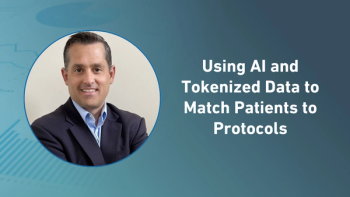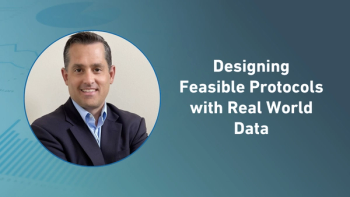
What Clinical Trial Assessments Can Be Done Virtually?
While not all clinical trial assessments can be done virtually, there are many that can be adapted for virtual use.
Virtual clinical trials are not a new concept, but recent events caused by the COVID-19 pandemic have forced us to rapidly adapt to their use in clinical trials. For many patients, limiting (or even eliminating) time in the clinic is critical to maintain patient safety. Here, we outline the options for performing clinical trials using virtual research tools and technologies, and how these changes will impact clinical research in the years to come.
Virtual vs. Remote vs. Clinic Visits
First, we need to be clear on what we mean by virtual visits. For the purpose of this article we will use the following definitions and bear in mind that many researchers are now adapting hybrid models, where different elements of each can be incorporated into any one trial (Figure 1).
Virtual
A virtual visit is defined as an interaction at a distance facilitated by technology. The people involved are physically separated and are only able to communicate using telephone, video, internet, or some other mode of distance communication (Figure 1).
Remote
A remote visit is defined as an interaction at a location away from the clinic or healthcare facility where the clinical research is normally performed. For a remote visit, the people involved are physically together, but they do not have access to the full range of clinic facilities, instruments, and other research staff. The most common type of remote visit would be by a home health provider traveling to a patient’s home, but it also includes a visit conducted at an alternate location different from the research clinic.
Clinic
A clinic visit is defined as the traditional interaction where the patient physically goes to the research clinic and has full access to staff, facilities, and instruments needed to conduct the clinical trial assessments.
Figure 1: Hybrid virtual trials incorporate different elements of each model into any one trial (Source: ERT)
What assessments can be done virtually?
For a clinical research study, what assessments can be done virtually? The short answer is – more than you might think. While not all clinical trial endpoints can be adapted to a virtual mode, many can be adapted to a virtual setting. This is particularly important during the COVID-19 pandemic, where reducing exposure for patients as much as possible remains critical to patient safety. Even if not all assessments can be done virtually, reducing exposure time by completing assessments at home should be the goal of all clinical trials.
When considering virtual assessments, the FDA has provided guidance on alternative data collection procedures, including the following general considerations (Figure 2):
- Preserving patient safety and privacy should be the primary goal
- Data quality and integrity should be maintained, including minimizing missing data and ensuring that the data which can be collected are sufficient to address the associated research question
- Sponsors need to ensure appropriate training for personnel and trial participants regarding any changes to procedures.
Let’s look at some of the common assessment types and how virtual solutions may be used to keep both patients and site staff safe while still maintaining privacy and data integrity.
Patient reported outcomes
Typically, a patient reported outcome (PRO) is captured directly from the patient, preferably using an electronic questionnaire (ePRO). Under normal circumstances, it is not uncommon for patient reported assessments to be completed at the study site using an electronic device provided to the patient during the clinic visit. Under the conditions of a virtual visit, the patient may not have access to the questionnaire or the technology/device used to capture the information, so an alternate collection method is required.
For assessments which are already configured to be completed at home (using paper forms, electronic devices, or a web browser), there is no problem converting to a virtual model. The patient can continue to submit the information as per protocol using their established method of collection. For paper assessments, checking compliance is problematic as form receipt can be delayed by weeks or months which can jeopardize safety and efficacy. This is a primary reason for use of electronic data collection methods, as compliance can be actively monitored as results are transmitted from the patient directly to the study database.
If the study was not configured with electronic devices available for home use, the sponsor can provide them to the patient so that the assessment can be completed as it was done in the clinic. These should be configured consistent with the site device, but have electronic audit trails to capture when and where the data were entered. It is also important to provide appropriate training in the use of these devices for the patients.
An alternative to providing a device for in-home use is to have the site staff virtually capture patient reported information by telephone or video call. Even if the assessment was not designed to be captured by interview, many questionnaires can be adapted to interview mode with the investigator entering responses on behalf of the patient, and to somehow indicate in the audit trail that the data was captured by site staff as opposed to directly entered by the patient. It is important that the interviewer have proper training on how to conduct an interview to avoid adding bias to the assessments. There is also a chance that the interviewer could make a mistake when entering data. To guard against this, it is helpful to use screen sharing software so that the patient can read along during the interview, improving their understanding of the assessment questions and verifying that the proper responses were entered by the investigator.
Figure 2: When considering virtual assessments, the FDA has provided guidance on alternative data collection procedures (Source: ERT)
Clinician reported outcomes
A Clinician Reported Outcome (ClinRO) is an observation captured by a trained investigator based on a patient’s observable behaviors, signs or symptoms. For example, the investigator may be able to see that a patient is experiencing pain, has tremors, or is acting confused. A ClinRO is designed to capture this information in a systematic way, preferably using an electronic capture method (eClinRO).
Because these assessments are completed directly by a clinician, they are already designed to be used in interview mode. However, the ability to extend a ClinRO to a virtual setting will depend on suitability of a virtual communication tool to monitor the desired behaviors. In most cases, video interaction will be critical, as telephone communication will limit observational abilities. With proper training, virtual ClinRO assessment can be done successfully provided that the targeted behaviors can be viewed on video. If video is not considered sufficient for clinical observations, then these aspects of the ClinRO will need to be skipped or evaluated remotely, for example, by a healthcare professional in the patient’s home.
It is important to note that some ClinROs (and some PROs as well) include critical measures of patient safety. For example, assessing suicide risk is a required safety evaluation for many drug classes, particularly those treatments which cross the blood-brain barrier. When evaluated in the presence of a clinician, immediate intervention is possible for any patients presenting with increased suicide risk. However in virtual visit situations, immediate intervention may not be available, so additional precautions (e.g., immediate notification of the managing physician) should be considered for obtaining assistance for patients identified at increased risk.
Performance outcomes
Assessing performance related outcomes usually requires a patient to attempt certain tasks followed by an assessment (typically by a clinician) of how well the task was completed. Depending on the type of assessment, these outcomes may be evaluated virtually. For example, range of motion assessments might be possible through the use of video communication. However, other more complicated performance assessments may not be practical in a virtual setting.
The FDA recommends that sponsors should assess whether evaluation of a performance outcome can be done accurately in a virtual setting. If only some aspects of the assessment can be collected virtually, sponsors must document and report which aspects of the assessment cannot be accomplished. For more complex performance assessments, a remote (off site) visit may be required but only if safety and privacy can be preserved.
Some types of performance outcomes require special equipment, including cognitive assessments, mobility evaluations, and others. In the case where special equipment is required, it may be possible to provide the equipment to the patient at their home so the test can be performed - potentially with the support of a clinician participating virtually. However, it is important to determine if the performance outcomes measured outside of the clinic are both safe and provide a valid result compared to what would be performed in the clinic.
Clinical procedures and laboratory tests
Clinical outcomes such as laboratory tests and diagnostic procedures usually require specialized technology, supplies, and training for sample or data collection. This would include assessments such as blood/urine tests, cardiac tests (ECG, Stress Test), lung function tests (Spirometry), and medical imaging (Radiology) examinations.
For these types of tests, virtual assessment requires that that the technology required to perform the test can be a) sent to the patient and b) safely and properly operated by the patient. For medical imaging assessments, virtual visits are not practical – though there may be other options (discussed below). For more routine assessments, such laboratory tests, remote methods may be the best option. For example, if a blood sample is required, the sample could be collected by a licensed and trained technician either at a patient’s home, or at a remote laboratory. Note that in the case of a home health visit, the assessment would be considered “remote” even though it is done at the patient’s home, as physical contact is required.
Advances in technology have improved virtual access for some assessments such as 6-lead ECG for cardiac safety and spirometry for basic lung function (Figure 3). The equipment can be sent directly to the patient and then supported by virtual training and data collection. This is particularly important during times of isolation or quarantine, where patient safety monitoring is critical but the patient cannot travel to a clinic or remote testing site.
Figure 3: With the KardiaMobile6L, clinical trial patients administer their own ECG/EKG testing from the comfort of home (Source: ERT)
As mentioned above, there are certain cases where virtual assessment is not possible, such as medical imaging and other advanced laboratory assessments. Very often these assessments are associated with critical safety and/or primary study endpoints, so not collecting the information could have negative impacts to study outcomes. While there are mobile facilities for some imaging procedures, this is not a practical option for at home examinations. Instead, these tests will have to be done either at the research clinic or at remote facilities with the proper equipment and trained staff.
When identifying remote facilities, it is essential that the facility and the staff are properly qualified for performing assessments consistent with the study protocol. Most remote facilities are not familiar with the special regulatory and research requirements associated with clinical research, so proper training and pre-qualification is essential to make sure tests can be done according to the study protocol.
Conclusion
Although the pandemic has become the worst global healthcare crisis of the past century, the adoption of virtual tools into clinical trials is a change whose time has come. While not all clinical trial assessments can be done virtually, there are many that can be adapted for virtual use. The use of virtual assessments requires new technologies, a clear audit trail of data capture modality, additional training, and careful consideration of the potential impact on study outcomes. However with proper planning, virtual visits can be successfully used for clinical trials while maintaining patient safety and study integrity. The additional advantages for patient convenience assure us that virtual visits will be a major part of clinical research going forward.
Kenneth G. Faulkner, PhD, is the Vice President, eCOA Science, for ERT.
Newsletter
Stay current in clinical research with Applied Clinical Trials, providing expert insights, regulatory updates, and practical strategies for successful clinical trial design and execution.






.png)



.png)



.png)
.png)
